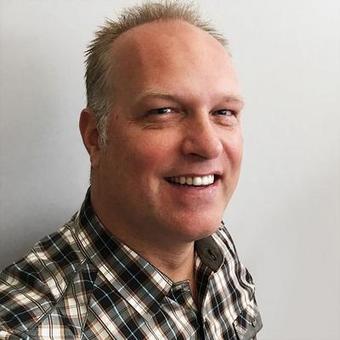
OEN Member NewsSightbox CEO on life under Johnson & Johnson (Portland Business Journal)
Portland entrepreneur Travis Rush’s career has taken a circuitous route.
There’s been stints as a performer, an attempt at a computer science education at Oregon State University, a crack at owning a restaurant and two country music albums before spending two decades making websites and e-commerce tools for businesses, mostly optometrist practices.
Yet that journey led Rush to his latest endeavor, Sightbox, a contact lens subscription service that also tracks doctor visits and makes appointments. The company was founded in 2014 and raised $4.2 million from investors before selling to health giant Johnson & Johnson for an undisclosed amount in September 2017.
In the last 18 months, Sightbox has continued to grow, from 17 workers at the time of the acquisition to 52 people today. The company plans to hit the 75-employee mark this summer.
We caught up with Rush to talk about what has changed, and what hasn’t, under the new ownership.
Does the company feel different now?
For the first time in my adult life I have a boss. Which is very weird to me.
What about the rest of the company?
It’s a combination of good and bad moments of just natural frustration trying to continue to be a startup within a large corporation. We are still learning a lot about what we are trying to do. But having the ability to keep building what I started building without stressing about fundraising is really the best of both worlds.
You are doing a lot of hiring, what are you looking for?
We are hiring a lot of engineers right now. As much as people think of us as in the contact lens space, we are really a tech-based service company. That is the underlying foundation of what we do. We are a concierge service for eye care.
The company intends to move into all of eye care. What will that look like?
Providing people a very clear and transparent financial model, which is unheard of in health care. You never know how much anything is going to cost. We’re trying to create clear monthly, budgetable expenses around eye health and vision needs. At the same time, keeping the eye doctor the center of that care. Between telehealth and mobile apps, our goal is to make sure new technology is used in a responsible way to augment the relationship with the doctor and not replace it.
Are you planning to take this model to other parts of health care?
The eye care thing was never the end game for me. It was the beginning. This all started eight years ago when I went in for an exam. I learned about health care and insurance and providers and I didn’t like how it was managed. I started looking at that and analyzing the industry and how we manage our own health care or not. And how we leave it up to other people to manage it for us. I didn’t know how to tackle all of that. (But) eye care, I do understand. I have been in it for 20 years and my father and sister are optometrists. I know this industry and the people in it and I started there.
Source: www.bizjournals.com

